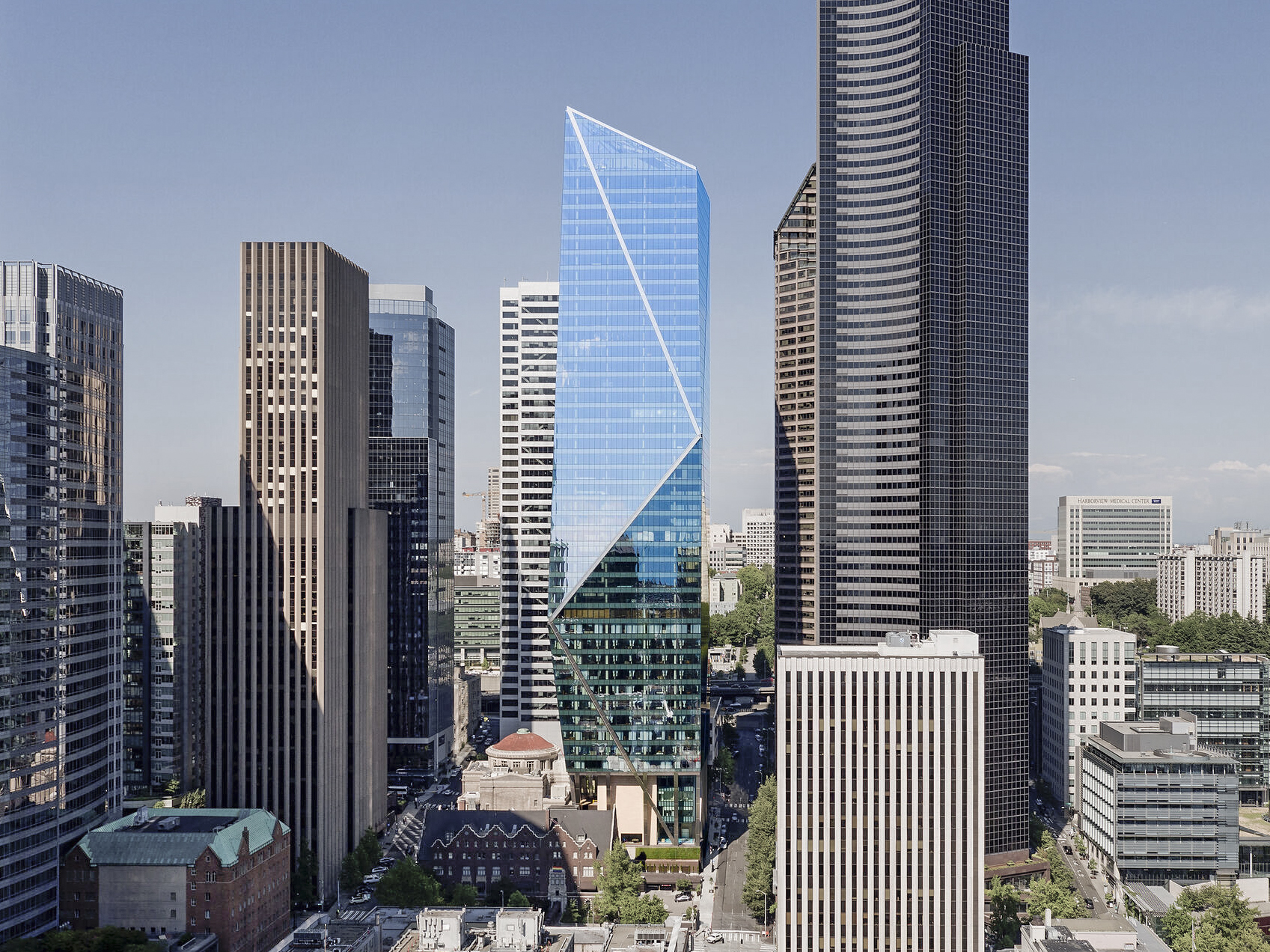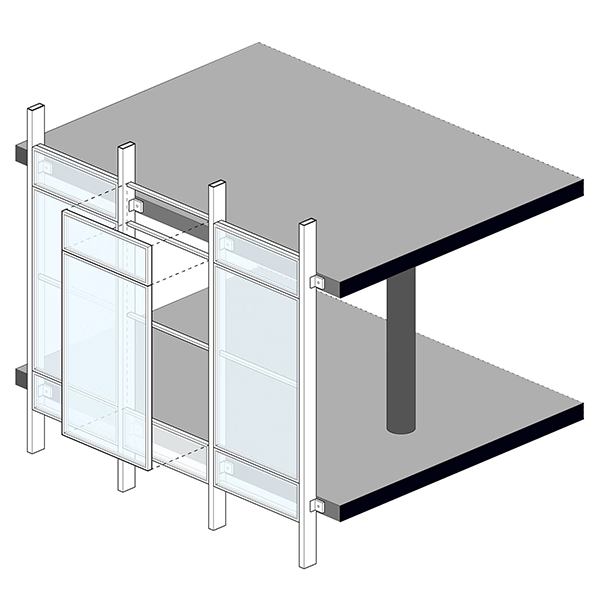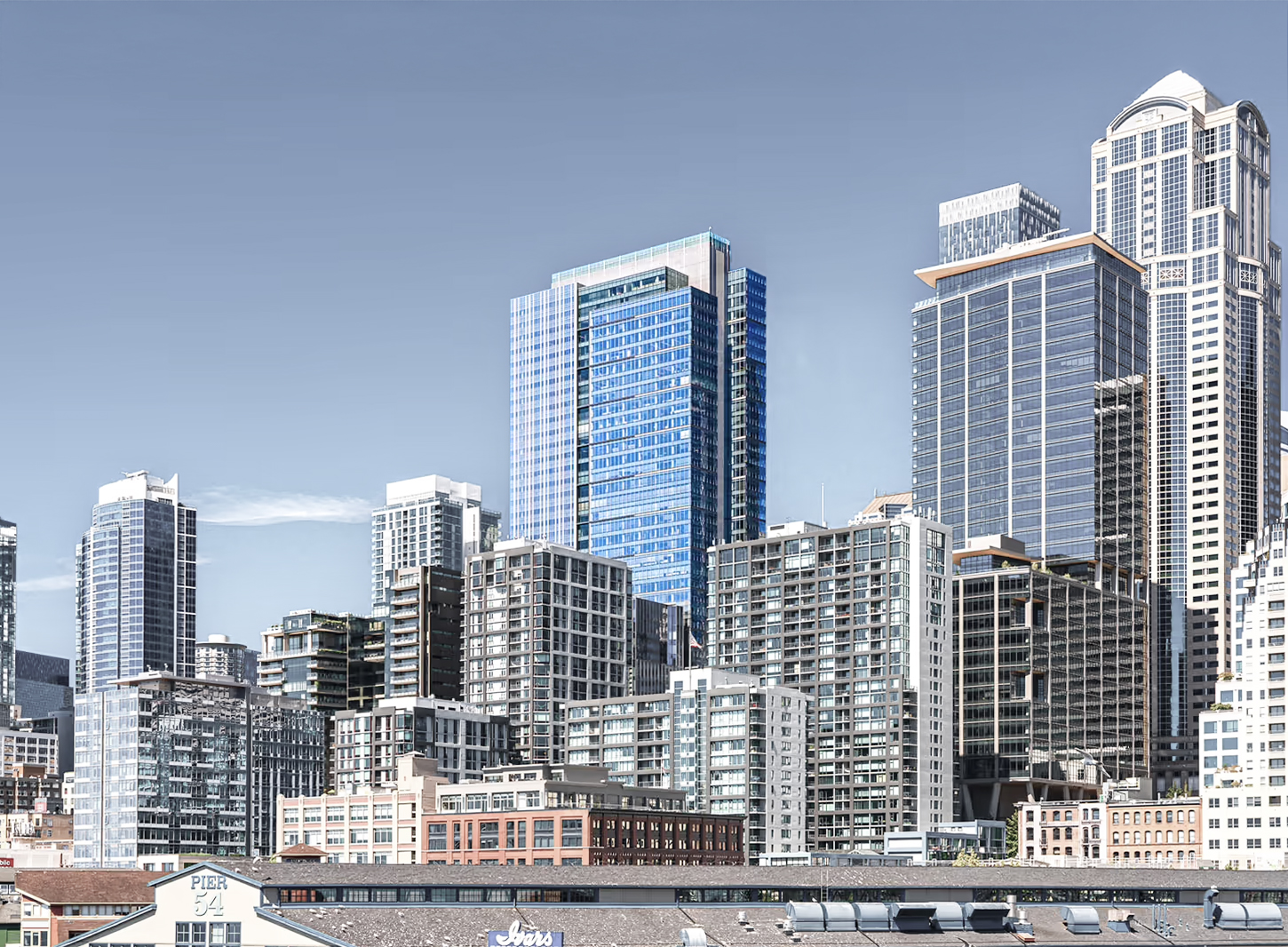The F5 Tower is a Contemporary skyscraper designed between 2007 and 2008 by Zimmer Gunsul Frasca, and built between 2014 and 2017, for a reported $450 million dollars, in Seattle, WA.
Its precise street address is 801 5th Avenue, Seattle, WA. You can also find it on the map here.
The F5 Tower has received multiple architecture awards for its architectural design since 2017. The following is a list of such prizes and awards:
- Skyline Awards in 2019
- MICHELIN Key Award in 2024
- SC Awards in 2024
Some reports indicate that the structural height is 201m; however, the elevation plans show that the height varies from 197m at the main entrance on Fifth Avenue to 207m along Columbia Street, due to the lower elevations exposed above sea level..


